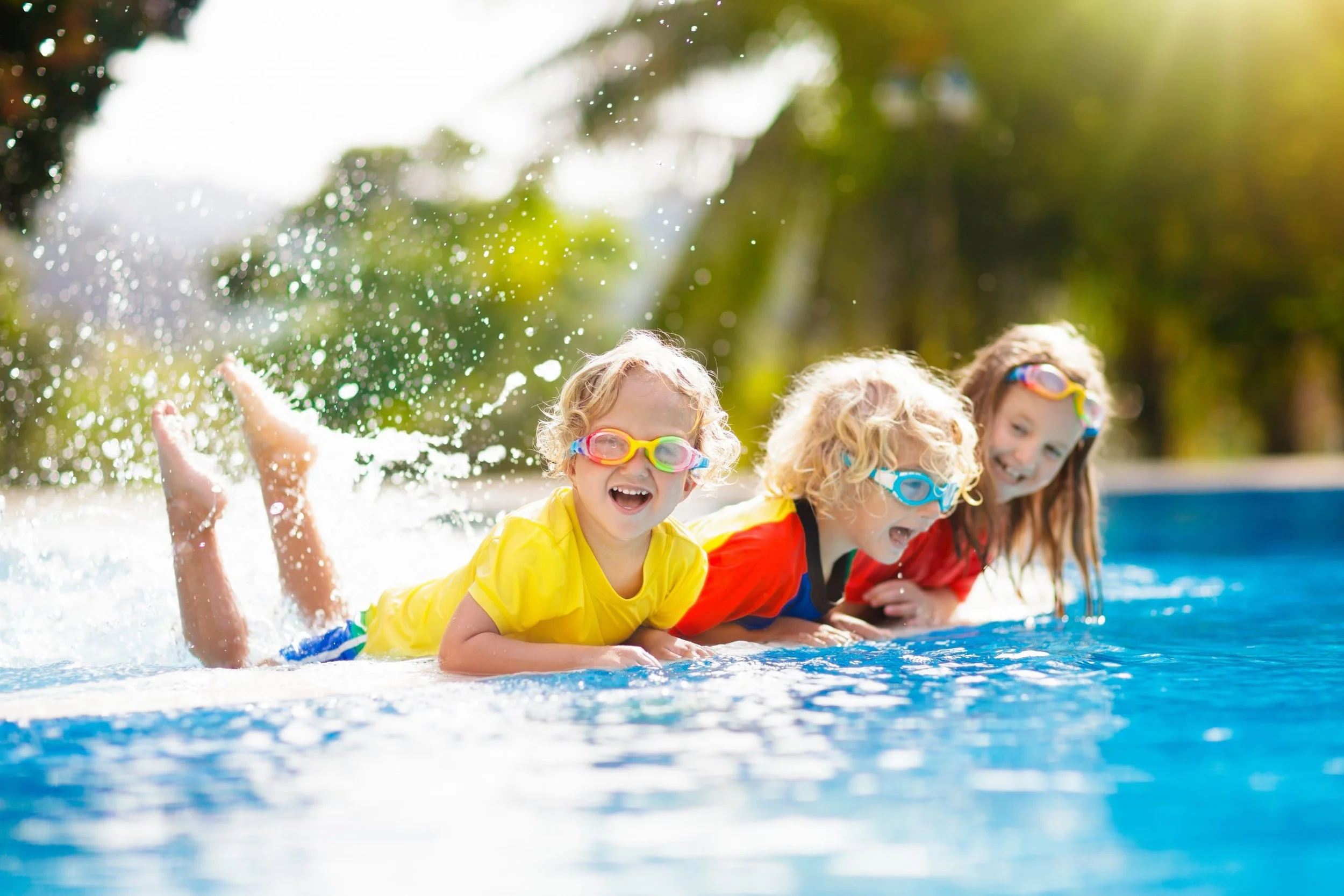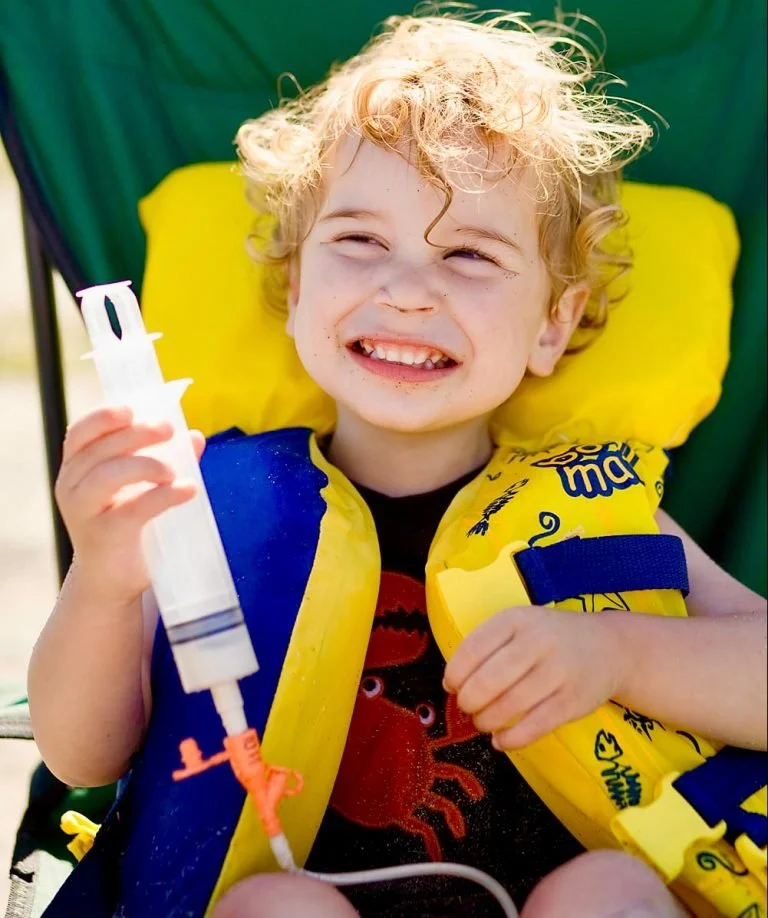Swimming with a Feeding Tube
Some of the most popular summertime activities include days at the pool, lake, beach, pond, or river. If you or your child uses a feeding tube, you may be hesitant on whether you or your Tubie should dive right in or sit this one out. You may catch yourself asking…
‘IS SWIMMING WITH A FEEDING TUBE ALLOWED?’
The short answer is, yes! Almost all Tubies who use either a G Tube, GJ Tube, J Tube or a NG tube are allowed to swim. In general, most doctors will recommend sticking to well-maintained, chlorinated, or saltwater pools or oceans when going swimming with a feeding tube and urge you to avoid lakes, ponds, or rivers as they may contain unsafe water quality and cause unwanted infections. If you are eager to plan a lake or river trip anyway, please check the CDC’s website to check for healthy swimming sites that have undergone water quality checks. Public hot-tubs have also been unadvised for swimming with a feeding tube as the elevated temperatures of water create an ideal environment for breeding of bacteria.
Photo Credit: @littleearthling
Now that you are aware your Tubie can participate in almost all summertime swimming activities, with little to no restrictions, check out the information below for more detailed recommendations on swimming with a feeding tubebased on which type of feeding tube your Tubie uses.
SWIMMING WITH A NG TUBE:
The main thing to note is before swimming with a NG Tube is to make sure the tube is closed, clamped, and disconnected from the feeding pump. This will ensure the tube will not get caught on any objects when swimming.
SWIMMING WITH A G TUBE/ GJ TUBE/ J TUBE:
**Please note that Tubies with a brand-new stoma site (less than two months from placement) should NOT swim. After you have checked with your doctor for a healed and healthy stoma site, your Tubie should be able to enjoy swimming normally.
GENERAL RECOMMENDATIONS:
Properly clean stoma site and feeding tube after swimming to prevent infection.
Change dressings after swimming if applicable, and make sure the site is completely clean and dried before the next feed.
Disconnect the feeding pump and extension set while swimming.
If your Tubie is encountering a sandy area, you may want to cover the entire tube site and feeding tube with a clear, protective dressing, such as AquaGuard or Tegaderm.
If your child must stay connected while swimming, consult with your doctor for the safest instructions on swimming with your feeding tube and ensure you know your Tubie’s limitations.
The Moog infinity pump is manufactured to be semi-waterproof and will be okay if it sees some splashes. Do not submerge your feeding pump or try to seal it in an airtight container as it may encounter large quantities of water.
**This information should not be used in place of the direction and advice of your doctor.**


